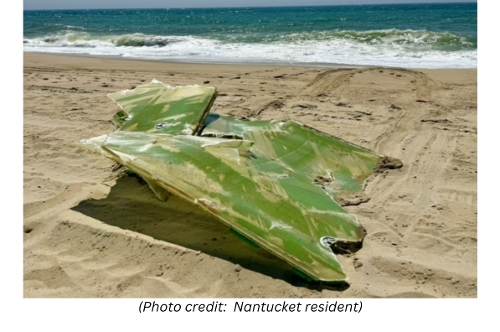
Turbine Blade Collapses and May Take Industry Down
A closer look into the Vineyard Wind incident and its complications for future projects
By David T. Stevenson
Center for Energy & Environmental Policy
July 29, 2024
Construction of the nation's first major offshore wind project, Vineyard Wind 1, located 14 miles off the coast of Nantucket, MA, has been halted. A General Electric Halide-X (12-megawatt), with a 351-foot-long fiberglass blade, collapsed during its commissioning test on July 13, 2024. At the time of the incident, the Nantucket Current reported that ten turbines were operational out of the 62 planned. Nantucket South beaches were closed because of possible injuries from sharp debris.
Over a week after the incident, the same local media news reported that the CEO of General Electric, in a conference call with investors, stated, "While we continue to work to finalize our root cause analysis, our investigation to date indicates that the affected blade experienced a manufacturing deviation," said GE Vernova CEO Scott Strazik.
The cause of the failure continues to be investigated. This project is the first use of this gigantic size turbine in the ocean anywhere in the world. The turbines are supposed to last at least through the twenty-year contract period.
Broader Industry Impact: Financial, Reliability, and Regulatory
According to Reuters News, General Electric has halted plans to build even larger turbines, and other offshore wind developers are following suit. Three projects slated for construction based on subsidies from New York were canceled after GE announced they would not build 18 megawatt turbines, which were used as the basis for the quotes.
Siemens Energy, a major turbine supplier, lost $2.5 billion (euros) last year from warranty claims on land-based 4 and 5-megawatt turbines. Offshore turbines face saltwater corrosion, waves, currents, and higher wind speeds, offering a much more challenging environment. With no real-world ocean experience, questions arise about reliability.
Project approvals are made by the federal Bureau of Ocean Energy Management (BOEM). In the past, BOEM required preconstruction bonding to cover the cost of decommissioning, just like every other electric generating technology, including solar. Most projects are developed using limited liability companies owned by larger companies who want to isolate the failure risk of that project rather than expose the larger company to massive claims.
BOEM regulations required decommissioning bonds for all projects. In response to a petition from the Vineyard Wind project developer, BOEM agreed to postpone the bond requirement until fifteen years into operation. This policy needs to change urgently because this blade failure highlighted the lack of real-world experience for these large turbines. It sure doesn't look like they will have a long lifespan, and failure is a disaster. Delaying bonding leaves the subsidizing states and, ultimately, electric customers stuck with the cleanup bill.
Due to rising costs, developers have canceled half the planned offshore wind projects in the construction pipeline. Those costs are pushing offshore wind to five or six times the power cost of solar, onshore wind, and natural gas power plants.
Conclusion
Recent studies show that offshore wind projects are killing marine mammals, including the critically endangered North Atlantic Right Whale, which could be driven to extinction. Additionally, based on the public comments I submitted on the Draft Environmental Impact Statement, these approved projects face lawsuits as the federal approval process failed to meet the rigors of the National Environmental Policy Act, the Endangered Species Act, the Administrative Procedures Act, and the Outer Continental Shelf Lands Act.
Given these compounding problems, could the turbine reliability issues be the final nail in the coffin for this industry in the United States?